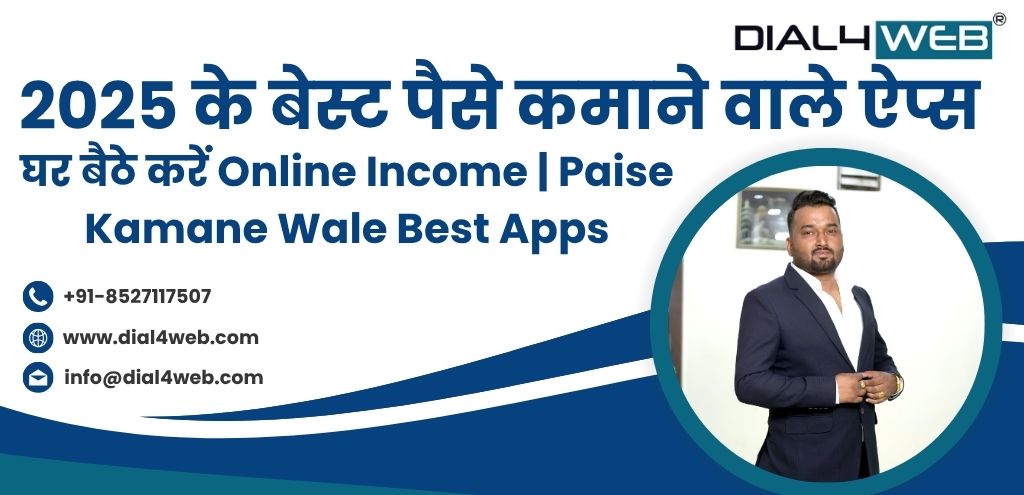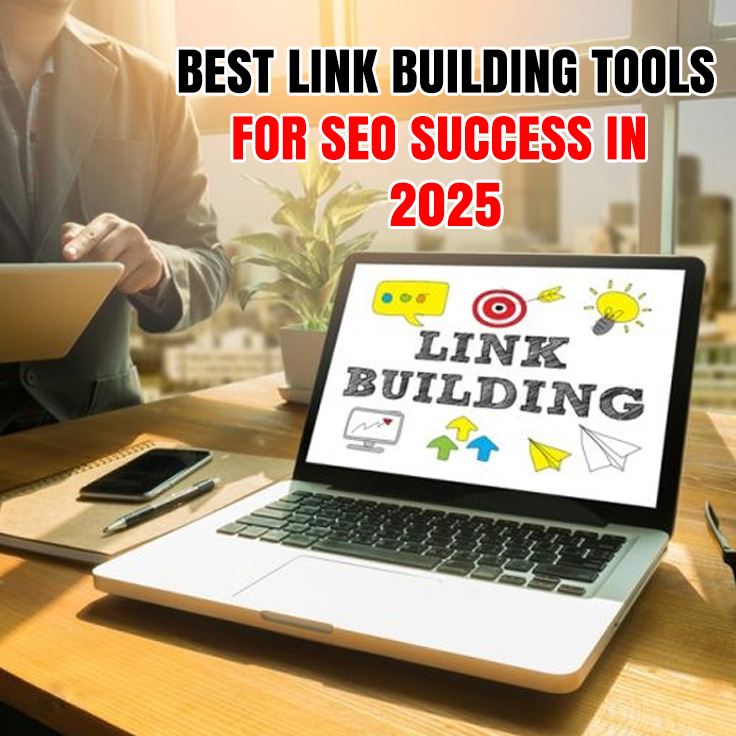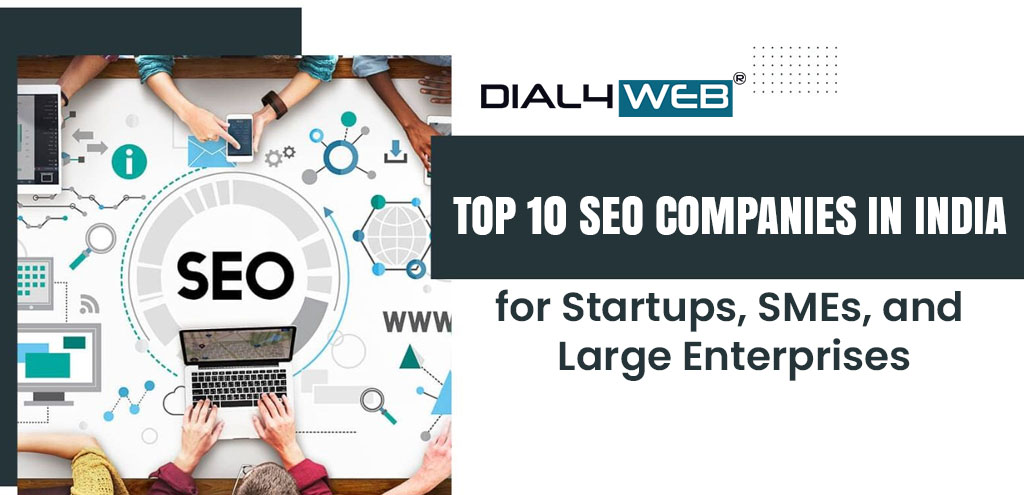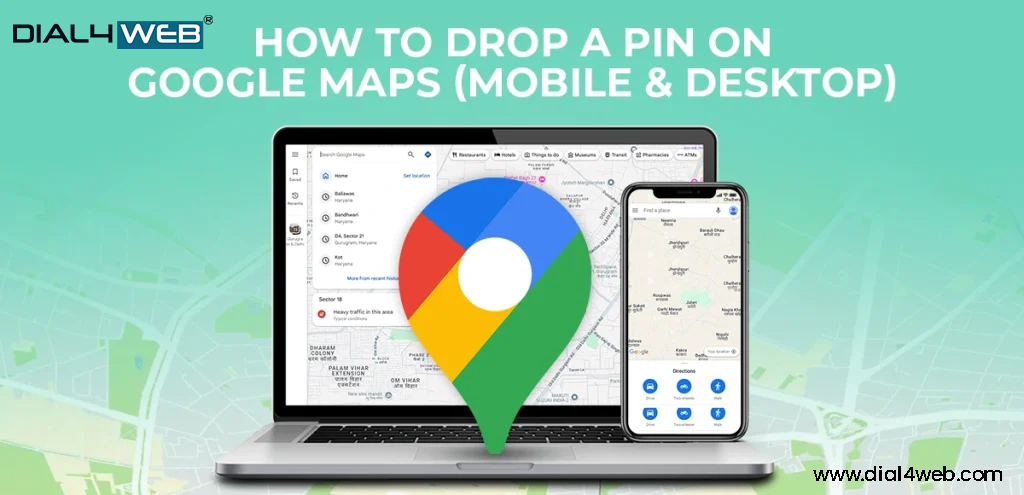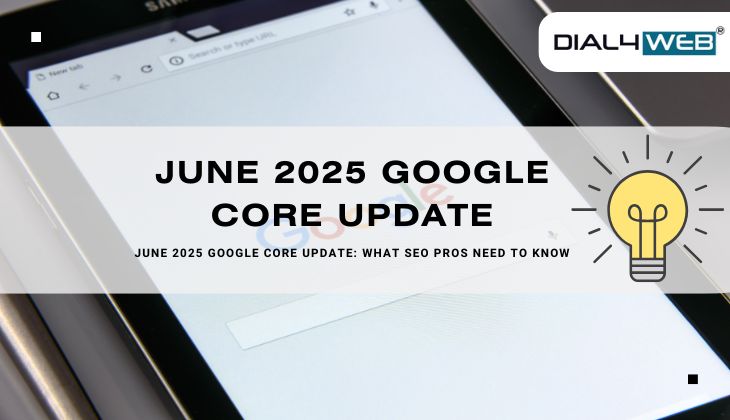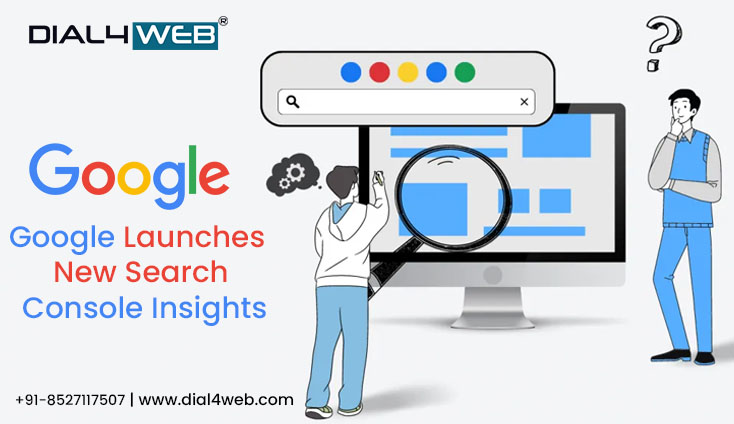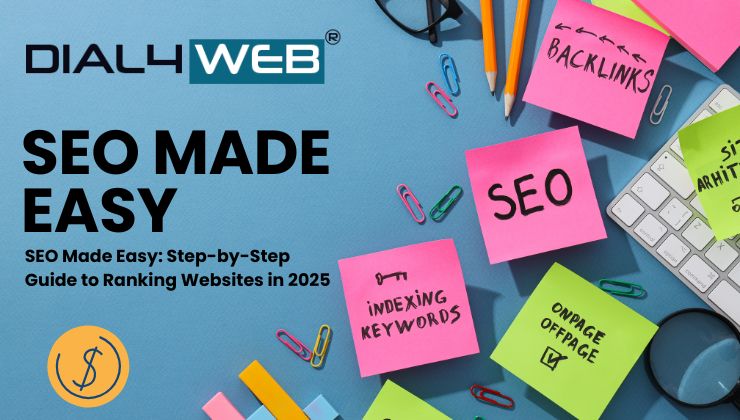
SEO Made Easy: Step-by-Step Guide to Ranking Websites in 2025
The Internet has picked up speed, and 2025 feels quicker than ever. For your business, blog, or side hustle, “just being online” won’t cut it anymore. You have to be found, and that’s what Search Engine Optimization (SEO) was built to do.
Far from a passing trend, good SEO drives steady visitors, builds trust, and keeps your site growing long after the launch rush. Still, because search rules change almost overnight, knowing how to earn a spot on today’s Google can feel confusing.
This guide takes the mystery out, step by step. Whether you're a complete beginner or brushing up on your skills, the tips here make SEO practical, simple, and even enjoyable in 2025.
Also Read: Best Social Bookmarking Sites List 2025
What’s Different About SEO in 2025?
Search Engine Optimization (SEO) in 2025 is more than just a keyword list or a sly placement tactic. It’s about understanding the user journey and solving the underlying issues users genuinely seek. Achieving success in today’s environment hinges on deciphering user intent, optimizing for experience, as well as Core Web Vitals, E-E-A-T, and other Google shifts like entity-based SEO. These days, trust and user experience hold more weight than ever. Google loves content that meets user needs, provides value, and is created by experts.
After the March 2025 update, businesses these days that use personalization and curate content tailored to their user dashed to the top of the rankings while pages with generic AI boosted filler content dropped.
Step 1: Start with Strategic Keyword Research
Every good SEO starts with research. As a first step, it’s important not to get distracted by trends but to focus and take real words users are searching for. In 2025, search intent alongside long-tail keywords will play an even more critical role. Users are increasingly using natural, spoken queries, and Google’s AI is getting better at picking up nudge hints.
Google Keyword Planner, SEMrush, or Ahrefs are good examples of tools that can help you identify relevant phrases that are super easy to rank for.
Example: Instead of the phrase ‘running shoes’, aim for ‘best waterproof trail running shoes for women 2025’. It’s longer, clearly shows intention to buy, and participates in the current trends.
Step 2: Optimize Your On-Page SEO Like a Pro
On-page SEO focuses on polishing every webpage so bots and humans see reason to engage with it. As for 2025, valuable, genuine content, along with clarity and a solid structure, matters a whole lot more than flashy tricks.
Ensure you cover these key items:
- Title Tags: Use your main keyword naturally, and provide a peek at the benefit they'll receive. Aim for 55 to 60 characters so nothing gets cut in the search results.
- Meta Descriptions: The clicks driven by meta descriptions may not help in ranking, but they are very useful in driving traffic. Make them readable and explain briefly what value the page provides while including the keywords.
- Headings (H1, H2, H3): Headings H1, H2, and H3 mark important content sections and help organize snippets. It is better to use headings to break up topics so that the users and the search engines can scan them without getting stuck.
- Content Quality: It is the first and foremost priority. Add a bit of personality, original ideas, and solid facts while reputation builders like Google’s E-E-A-T (experience, expertise, authority, trust) would convert helpful to dependable content.
- Internal Linking: Internal Linking is all about giving directions in the form of digital breadcrumbs. Link to cornerstone posts and sister articles so that users can navigate easily and Google can discover a well-linked topic.
- Image Optimization: It enhances the look as well as helps with the overall loading speed of the page. Alt texts should be brief yet descriptive. Additionally, shrinking file weights and renaming them meaningfully ensures that images load swiftly while still explaining themselves.
- Schema Markup: When you add Schema markup everything becomes easier for google to navigate through your content. Marking up faqs, articles, reviews or products allows search engines to add rich snippets to flagged items.
- E-E-A-T: The importance of E-E-A-T is clear in 2025. Add links for reliable research, showcase your credentials for the topic, and list your short bios and tell readers why you are the perfect author for that article.
Step 3: Strengthen Your Technical SEO
Think of technical SEO as the backbone or the skeleton of your website. If the bones are weak, the pretty skin and decorations won’t do much good.
- Improve Site Speed: Both people and Google want pages that load in a blink. For image-heavy sites, consider a CDN. Trim extra code, and compress photos.
- Ensure Mobile-Friendliness: It should be apparent that mobile-friendliness is not optional. Tablets and phones account for over 65% of users. Ensure responsive templates function on all devices.
- Fix Broken Links and 404s: These gap pages are frustrating to users and insidiously undermine the trustworthiness of your site over time. ‘Screaming Frog’ offers free site scans to find these gaps.
- Secure Your Site (Https): Shifting to HTTPS gives your site a security upgrade. Most browsers mark unsecured sites with warnings which makes users instantly lose trust.
- XML Sitemap: Once fully functional, create and submit your XML Sitemap on Google Search Console for indexing. This instructs automated systems to catalog which pages should be archived.
- Html Sitemap: Add a simple HTML Sitemap so users can appreciate all the content at once.
- Optimize for Crawlability: Lastly, simplify website navigation for crawlers. Use logical URL structures, streamline the robots.txt file and eliminate unnecessary redirects.
Step 4: Build Authority Through Off-Page SEO
While content creation is the focus of on-page SEO, building the brand's reputation and trust falls under off-page SEO. It’s still an uphill battle to obtain quality backlinks. Opt for a single powerful backlink instead of countless others from low-quality or irrelevant blogs.
Written resources that are easy to share help in link acquisition. Niche blogs can be sponsored and guest posts can be provided. Services like HARO (Help a Reporter Out) can also get you mentioned.
Your authority is also enhanced by social proof. Through LinkedIn, Reddit, or YouTube, interact with users, respond, participate and share your knowledge at no cost.
A SaaS startup published an industry report and got cited by multiple top-tier blogs. Their domain authority spiked, and traffic grew by over 150% in two months.
Step 5: Optimize for Local SEO (If You Serve a Location)
Do you have a store or an office? If your answer is yes, then local SEO will not only improve your rankings, but also help literally get you found on the map. Start by claiming your Google Business Profile and optimizing it. Also ensure NAP (Name, Address, Phone number) is the same across all platforms.
Satisfied customers are likely to leave local keyword driven Google reviews. Make sure you answer reviews, post photos, and update your listing. Make sure to use localized content on your site. Add eg., “best hair salon in Pune 2025” to show relevance to regional searches.
Step 6: Don’t Ignore Google’s Core Web Vitals
Google’s Core Web Vitals is part of Google’s ranking system as of 2025. Here is what needs attention:
- LCP (Largest Contentful Paint): Ensure the main content is loading with speed.
- FID (First Input Delay): Users clicking on your site should be able to have a quick response from the site.
- CLS (Cumulative Layout Shift): Annoying shifts in layout as a page loads should be avoided.
Tracking and fixing issues can be done through Google Search Console or Lighthouse.
A fashion blog optimized its CLS by stabilizing image sizes and improved LCP with lazy loading. Within weeks, their average ranking position improved significantly.
Step 7: Avoid Common SEO Myths in 2025
SEO misinformation spreads like wildfire, so here are some Common SEO Myths in 2025 that need un-myth-ed:
Myth #1: Critical keyword density.
In reality, using a keyword contextually and naturally is far more impactful than repeating it X times.
Myth #2: Better rankings and ‘higher up’ backlinks.
Not always. One backlink from Forbes or Wired is worth more than a hundred from random blogs.
Myth #3: You Only Need to Do SEO One Time.
SEO work is relentless. Content needs constant refreshing, active monitoring of rank positions, and must adapt to algorithm shifts.
Myth #4: Duplicate Content Will Always Get You Penalized.
Some duplication, like quotes or product descriptions, is normal. Google penalizes spammy repetition and not duplication in general.
Track Your Progress and Keep Improving
Always remember to measure what matters and track designated KPIs for traffic. Google Analytics 4, Search Console, and SEMrush are a few of the tools available that track engagement metrics, bounce rates, and even keyword positions.
Align your business objectives to set SEO KPIs. This can include: improving website traffic, enhancing lead generation, or increasing e-commerce conversion rates. The more you uncover about your data, the stronger your strategy will be.
Conclusion
To rank on Google, it’s more important to serve the customer better rather than outsmarting the algorithm. Providing excellent content that is helpful, fast, and reliable, addresses real-world challenges, backed by genuine experience, is the winning 2025 SEO strategy. A website can be regarded as a trusted source by search engines and users after going through keyword research, on-page optimization, technical SEO, and Core Web Vitals.
“Experience is the queen of content, and together, they will rule in 2025.”



